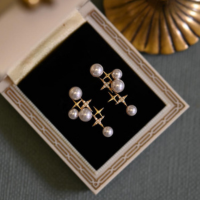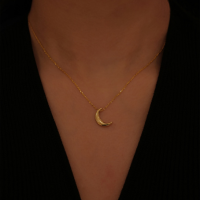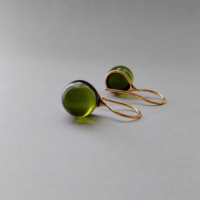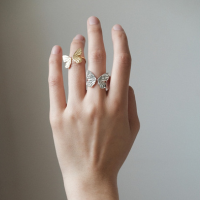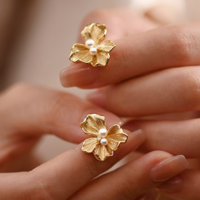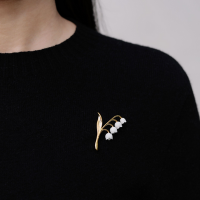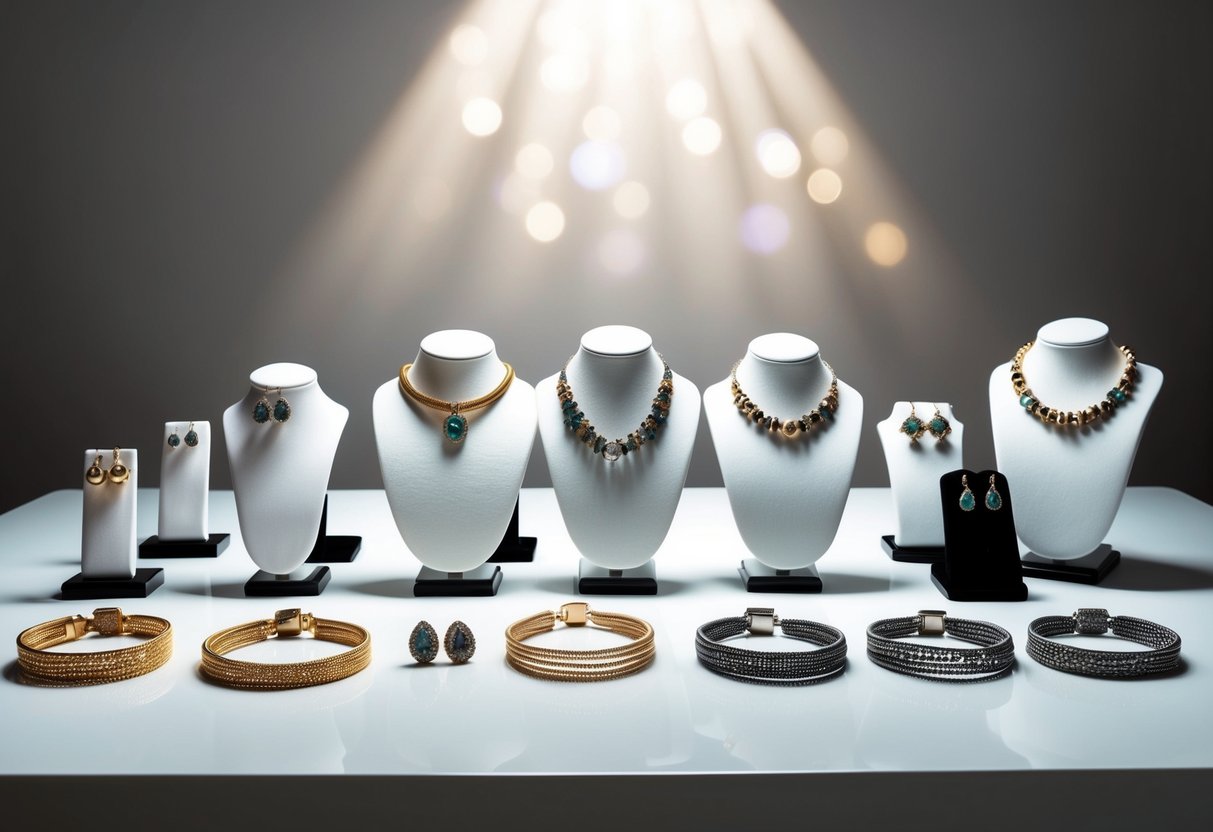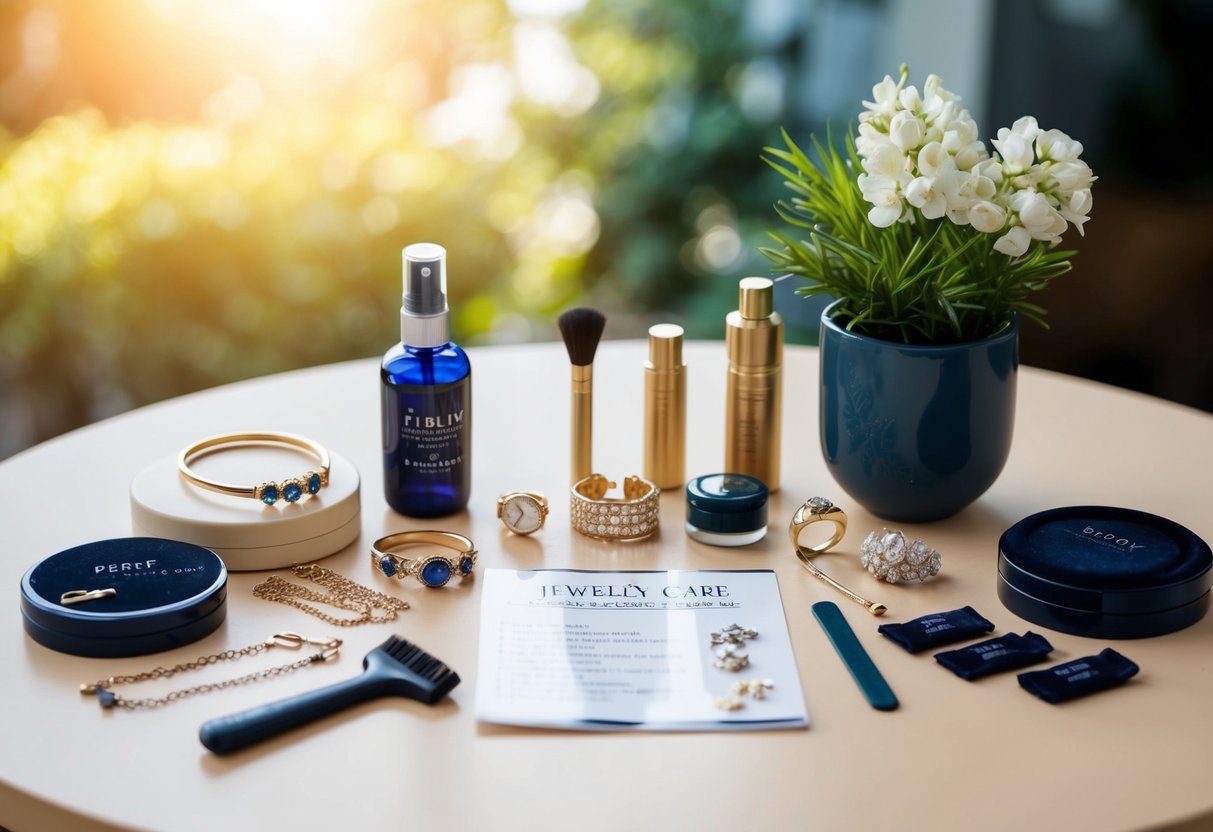
Jewelry Care Guide: Essential Tips for Lasting Elegance
Check out our personalized jewelry collections! (kids drawing jewelry, coin jewelry, wire jewelry, fingerprint jewelry, handwriting jewelry, and more)
Taking care of our jewelry is like giving it a long-lasting shine and sparkle. It isn't just about looking good, but also about making sure our precious pieces can be enjoyed and admired for years to come. Proper jewelry care can prevent damage and help maintain its beauty and value.
Key Takeaways
- Keep jewelry clean and store it safely.
- Regular checks prevent damage.
- Learn which materials need special care.
Understanding Jewelry Materials
Jewelry materials like gold, silver, diamonds, and gemstones each have their own care needs. How we take care of them affects their look and durability.
Gold Care
Gold is a soft metal that requires gentle handling. When cleaning gold jewelry, we should avoid abrasive materials that can scratch it. A mild soap solution and a soft cloth work best.
Avoid: Chlorine and harsh chemicals. They can weaken gold, leading to breakage.
Tip: Store gold separately in soft pouches to prevent scratches.
For tarnished gold, a professional cleaning might be necessary. Regular checks to ensure clasps and settings are secure can help prevent loss.
Silver Care
Silver can tarnish over time, especially when exposed to air and moisture. We can keep silver looking shiny by using a special silver-cleaning cloth.
Tip: Store silver in an anti-tarnish bag or cloth bag.
Avoid: Wearing silver when swimming; exposure to chlorine and saltwater can speed up tarnishing.
For tougher tarnish, use a silver polish or dip. Ensure the jewelry is dried completely before storing to prevent further tarnish.
Diamond Care
Diamonds are the hardest natural substance, but they can still lose their sparkle with dirt and oil buildup. To clean diamonds, use soapy water and a soft-bristled toothbrush.
Tip: Regular cleaning helps retain their brilliance.
Avoid: Touching diamonds with fingers; oils can reduce their shine.
Inspect settings regularly for loose prongs. Professional check-ups can ensure settings are secure, avoiding loss.
Gemstone Maintenance
Different gemstones need different care. Some are softer and can scratch easily. Clean most gemstones with warm soapy water, but check if special care is needed for specific stones.
Avoid: Harsh chemicals and ultrasonic cleaners for soft stones like pearls and opals.
Tip: Store gemstones individually to avoid scratches from other jewelry.
For porous stones like turquoise, avoid prolonged exposure to liquids and oils, as they can discolor the stone.
Daily Wear and Tear Prevention
Let's keep our precious jewelry pieces looking new. We'll explore the best ways to store our jewelry and how to shield them during daily activities.
Proper Storage Solutions
Keeping our jewelry safe starts with smart storage. Soft pouches or individual compartments in jewelry boxes prevent scratches. Each piece gets its own spot, reducing contact with others. Using a ring dish can help keep frequently worn items accessible without the risk of losing them. Anti-tarnish strips are key, especially for silver pieces, to keep shine.
Avoiding humidity is crucial, so we must ensure our storage places are dry. Close the jewelry box fully to block dust and light. When traveling, we should use travel cases with padding to protect delicate items.
Protective Measures for Activities
Jewelry needs a break during certain activities. Remove rings and bracelets while doing chores or exercising to avoid damage or loss. Swimming or shower time can expose jewelry to harsh chemicals and soaps, so it’s best to set them aside before getting wet.
When applying sunscreen or lotion, take off jewelry to prevent residue build-up. Caution also applies when using products with fragrances and oils. If we’re doing tasks outside, like gardening, it's safer to keep rings at home. This not only prevents scratching but also keeps them from slipping off.
At-Home Jewelry Cleaning
Keeping our jewelry clean and beautiful doesn't require a trip to a professional. With the right techniques, we can maintain our pieces at home. Here are some methods for cleaning different types of jewelry.
How to Clean Silver Jewelry
For silver jewelry, we recommend using a soft cloth to gently polish the surface. If the silver is tarnished, create a mixture of mild dish soap and warm water, and soak the piece for a few minutes. Use a soft-bristle toothbrush to scrub gently. Avoid bleach or harsh chemicals, as they can damage the metal.
Rinse thoroughly with clean water, and dry with a soft cloth. Storing silver in anti-tarnish bags can prevent future tarnishing. Regular cleaning will keep it shining and beautiful.
How to Clean Gold Jewelry
For gold jewelry, a mixture of mild dish soap and warm water works wonders. Submerge the gold piece in the solution for a few minutes. Use a soft toothbrush to remove dirt, especially in crevices. Avoid abrasive materials that can scratch the gold.
Rinse with warm water and dry with a soft cloth. Polishing with a jewelry cloth enhances the shine. Store gold separately to prevent scratches from other metals.
How to Clean Gold Vermeil Jewelry
Gold vermeil requires careful handling. Use a gentle, lint-free cloth to wipe off dirt. Avoid soaking in water to maintain its plating. If necessary, dip a soft cloth in soapy water and gently clean the surface.
Rinse promptly and dry thoroughly. When storing, keep it away from other jewelry to avoid scratches. Knowing when to clean is just as important as knowing how.
How to Clean Pearls
Pearls are delicate and need special care. Use a soft, damp cloth to wipe each pearl gently. Avoid soaking pearls in water or using harsh soaps, as they can damage the nacre.
After cleaning, lay pearls flat to air dry. Store them in a soft pouch separate from other jewelry to prevent scratching. Regular care keeps pearls lustrous and beautiful.
How to Clean Gemstones
Gemstones vary, so it's essential to know your gems. For many, a simple soap and water mix does the trick. Use a soft brush to clean, but be gentle around any settings to avoid loosening stones.
Avoid harsh chemicals often, as they can damage certain stones. Wipe dry with a soft cloth and store safely. Always check gemstone-specific cleaning guidelines for best results.
Professional Cleaning Advice
Sometimes, professional cleaning is best, especially for valuable or heavily soiled pieces. Jewelers have the tools and skills needed to clean and inspect for damage.
Regular check-ups help maintain jewelry integrity and shine. If uncertain about cleaning a piece at home, consulting a professional can save time and ensure proper care. Stay confident in your collection's care by balancing at-home cleaning and professional advice.
Inspection and Maintenance
Keeping our jewelry in good condition means checking them often and fixing any problems. Regular inspections help us catch issues like loose stones or tarnishing early.
When to Inspect
We should inspect our jewelry regularly to ensure it remains in good shape. For pieces worn daily, a monthly inspection might be best. We suggest checking less frequently worn items every few months.
To do this, we should look for loose settings and any scratches or dents. We can use a magnifying glass to spot tiny problems. Sometimes, even shaking the jewelry gently by our ear can help us hear loose stones.
Identifying Common Issues
Common problems include tarnished metal, loose stones, and broken clasps. Tarnishing often affects silver and some gold jewelry. We can clean tarnished pieces using a gentle cleaner made for precious metals.
Loose stones might occur in rings or bracelets. If we notice a loose stone, it’s crucial to secure it before wearing the item again. A visit to a professional jeweler can prevent further damage.
Clasps and hooks can wear out or break. We should check these parts often. A broken clasp can lead to losing the entire piece. Regular inspection helps us maintain our cherished jewelry for years.
Jewelry Longevity Tips
To help your jewelry last longer, we need to consider our environment and how we handle our pieces. Paying attention to these aspects can keep your jewelry looking new and shiny.
Environmental Factors
Jewelry can be affected by where it's kept and worn. Humidity, sunlight, and chemicals can cause tarnishing or damage. We should store jewelry in a cool, dry place. Direct sunlight can fade gemstones and make metals lose their shine.
It's important to keep jewelry away from perfumes, lotions, and cleaning products. Chemicals in these items can cause discoloration. Following these steps helps our jewelry maintain its beauty and brilliance over time.
Handling and Usage Tips
How we wear our jewelry greatly impacts its lifespan. Removing rings and bracelets when doing housework, sports, or using harsh chemicals is crucial.
We should also avoid wearing jewelry in pools or hot tubs where chlorine can cause harm. When putting on jewelry, it's best to wait until after applying makeup, hairspray, or perfume. This creates a protective barrier for our pieces.
Accessory Coordination
Coordinating accessories can enhance our overall look. It’s essential to consider color, style, and occasion when choosing jewelry to match outfits or create a contemporary style.
Matching Jewelry to Outfits
When we pair jewelry with our outfits, color harmony is key. For instance, gold jewelry tends to look great with warm tones like reds and browns. Silver jewelry pairs well with blues and greens.
Choosing the right piece:
- Use bold jewelry for simple outfits to create a statement.
- For patterns, choose simple jewelry to avoid clashing.
Considering neckline:
- High necklines work best with long necklaces.
- V-necks can be accentuated with a pendant necklace.
Contemporary Style Tips
Staying current with jewelry trends can make our outfits shine. Layering is a popular trend. We can stack multiple necklaces or bracelets for a modern look. Mixing metals is another way to add interest to our ensemble.
Experimenting with shapes:
- Incorporate geometric or asymmetrical designs for a bold and fresh look.
Personalized jewelry:
- Pieces with initials or birthstones make an outfit uniquely ours.
Frequently Asked Questions
We all love our jewelry and want to keep it looking its best. Proper care and storage help maintain its brilliance and minimize damage. Here, we address common concerns to help preserve our treasures.
How can I maintain the shine of my jewelry over time?
To keep our jewelry shining, regular cleaning with a soft cloth is helpful. We should also consider using special jewelry cleaners, ensuring they are suitable for the type we own. Avoiding contact with everyday chemicals, like perfumes and lotions, can also preserve the luster.
What are the best practices for storing different types of jewelry to prevent tarnish?
We recommend storing our jewelry in a cool, dry place. Using soft pouches or lined boxes helps protect against scratches and tarnish. Keeping pieces separate or in individual compartments can prevent tangling and damage.
Are there any particular substances or materials I should avoid when cleaning my jewelry?
Harsh chemicals and abrasive materials should be avoided. These can damage and dull. Instead, mild soap and warm water are good for most types, but be sure to check what's safe for each piece.
What is the recommended way to clean delicate gemstones without causing damage?
Delicate gemstones need gentle care. Using a soft brush and lukewarm soapy water is often safest. We should avoid soaking them, as some stones are porous. Always dry them carefully with a soft cloth.
How often should jewelry be professionally cleaned to maintain its condition?
We advise professional cleaning once or twice a year for regular wear. For heirlooms or valuable pieces, more frequent checks and cleanings might be beneficial. This ensures that any mounting or settings remain secure.
Can certain activities or environments have a negative impact on jewelry, and how can I protect it?
Certain activities, like swimming and exercising, can harm some jewelry. Chlorine and sweat are common culprits. We suggest removing pieces before such activities to prevent damage and ensure their longevity.

